Today’s stroll in Meguro
The name of Meguro is said to have come from Meguro Fudo.Many temples were built in this area as it was the back gate of Edo.
Iemitsu, the third shogun of the Edo shogunate, prayed for the protection of Edo and peace in the world, and the Black Fudoson, one of the five colored fudos, was the center of many shrines and temples.
- Today’s route of Meguro
- A.JR Meguro Station
- B.Daienji Temple
- C.Meguro River Taiko Bridge
- D.Banryuji Temple
- E.Five Hundred Arhats Temple
- F.Meguro Fudoson Ryusenji Temple
- G.Jyoyuin Temple (Takoyakushi)
- H.Rinshi-no-mori Park
- I.(Goal)Musashi Koyama Station
- Route Review of Meguro
- Access to Meguro Station
- Parking around Meguro
- Stroll in Meguro Official Website
- Recommended around Meguro
Today’s route of Meguro
A.Actually, Shinagawa City,”Meguro Station”
B.”Daienji Temple”, a stone Buddha of the Arhat who continues to mourn
C.”The Meguro River Taiko Bridge”, also painted by Hiroshige Utagawa
D.”Banryu-ji Temple”, a Benzaiten (Goddess of Mercy) in a rock cave
E.”Five Hundred Arhats Temple”, 536 Buddha statues dug by one person.
F.”Meguro Fudoson Ryusenji Temple”, the origin of the name of Meguro
G.”Jyoyuin Temple (Takoyakushi)” for curing illnesses
H.”Rinshi-no-mori Park”, where trees from the days of the forestry experiment station remain
I.”Musashi Koyama Station”, which is undergoing redevelopment
A.JR Meguro Station
Meguro Station on the JR Yamanote Line is a terminal station with three train lines: the Tokyo Metro Namboku Line, the Toei Subway Mita Line, and the Tokyu Meguro Line, in addition to being just five minutes from Shibuya and eight minutes from Shinagawa.
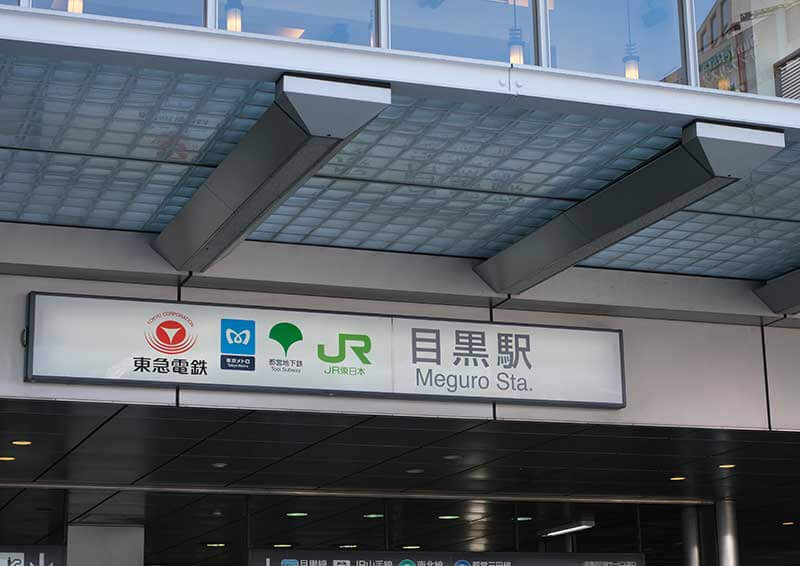
Go out the west exit of JR Meguro Station, and to the left is Gyoninzaka.
Tokyo often surprises me with its many hills, and Gyoninzaka is another steep slope, about 150 meters long.
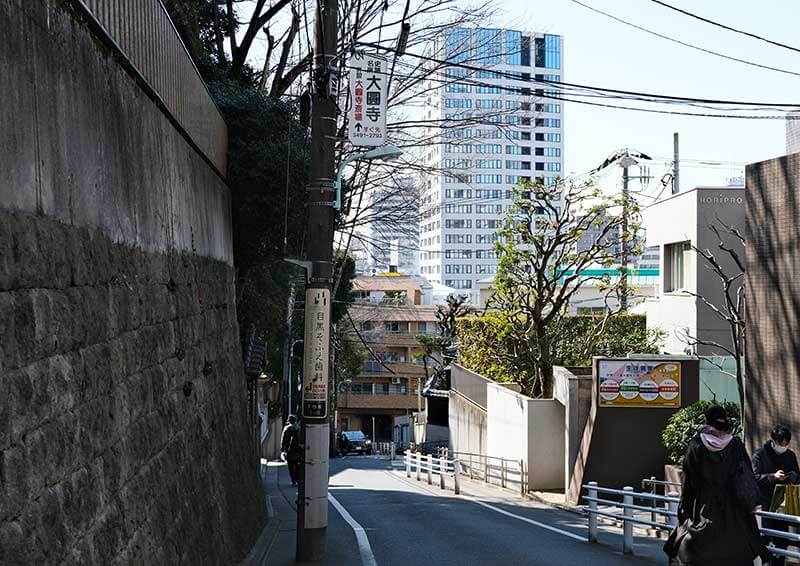
Gyoninzaka
Gyoninzaka used to be a pilgrimage route to Meguro Fudoson.
It was named after the monks who practiced asceticism at Daienji Temple and the people who came and went from the temple using this slope.
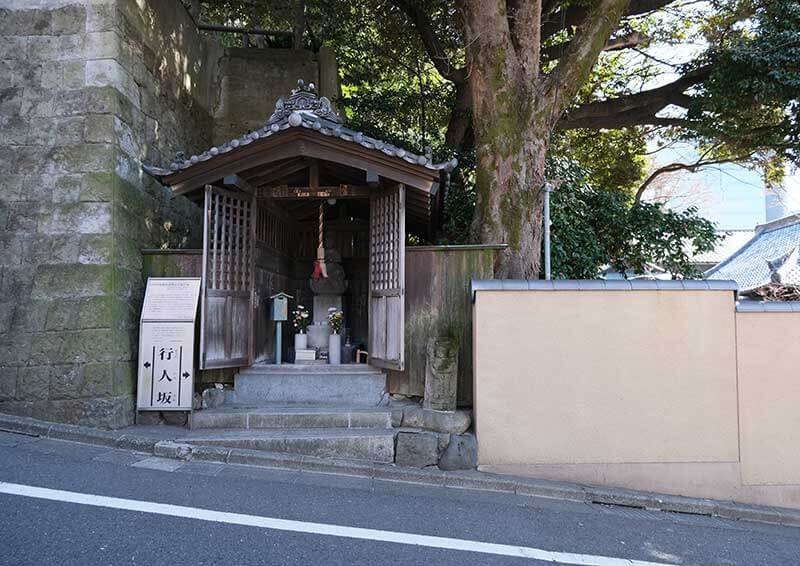
On the way down the steep hill, you will find the Daenji Temple.
Many people, including office workers, housewives, and students, can be seen stopping by on their way to the station. It is evident that the temple is deeply rooted in the local community.
B.Daienji Temple
The temple is said to have originated around 1615, when an ascetic monk from Mt. Yudono opened a Buddhist temple with Dainichi Nyorai as the main deity.
As soon as you enter the precincts of the temple, you will see a total of 520 stone Buddha statues, which were built to mourn the victims of the Great Meiwa Fire in February 1772, when the main hall of Oenji Temple caught fire. The fire spread to 628 towns in Edo City, making it one of the three major fires in Edo.
It was not allowed to be rebuilt for a long time, but in 1848, it was rebuilt by Shimazu Narioki, the lord of the Satsuma domain.
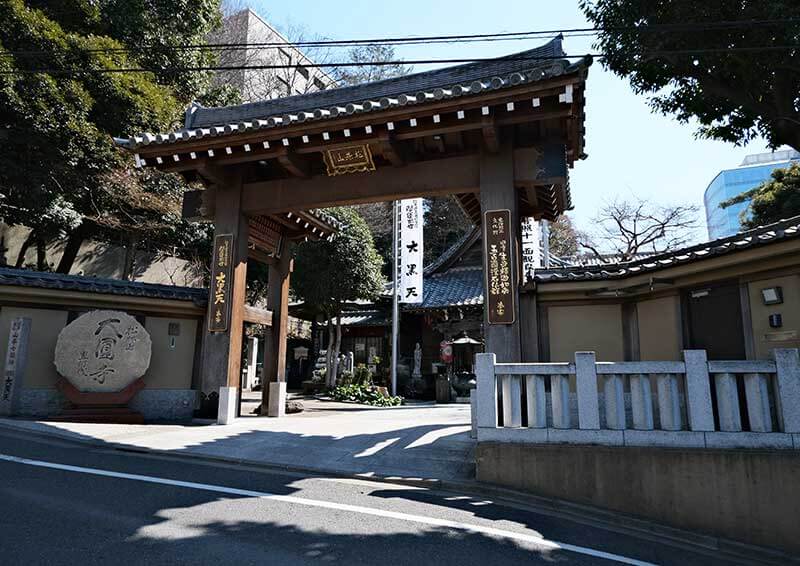
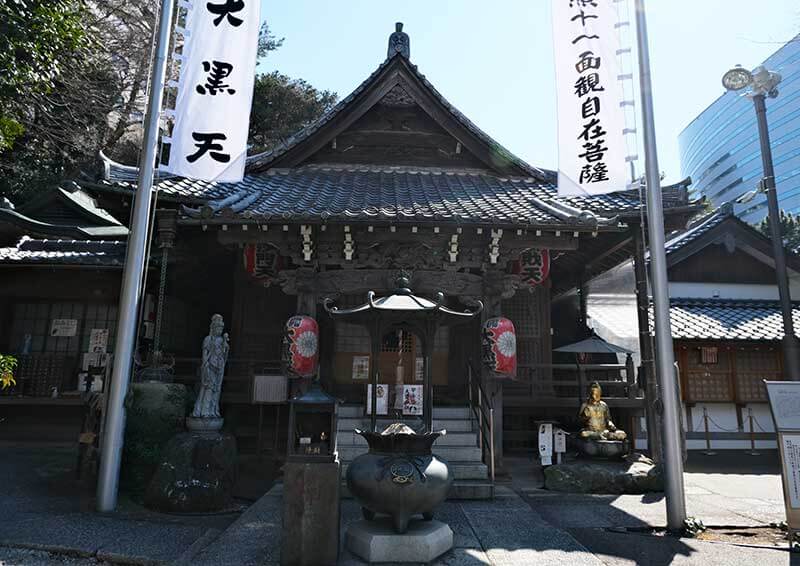
The “Melting Jizo” is for relieving worries, the “Yakushi Nyorai” is for curing illnesses by applying gold leaf, and there are also various other benefits such as “matchmaking.
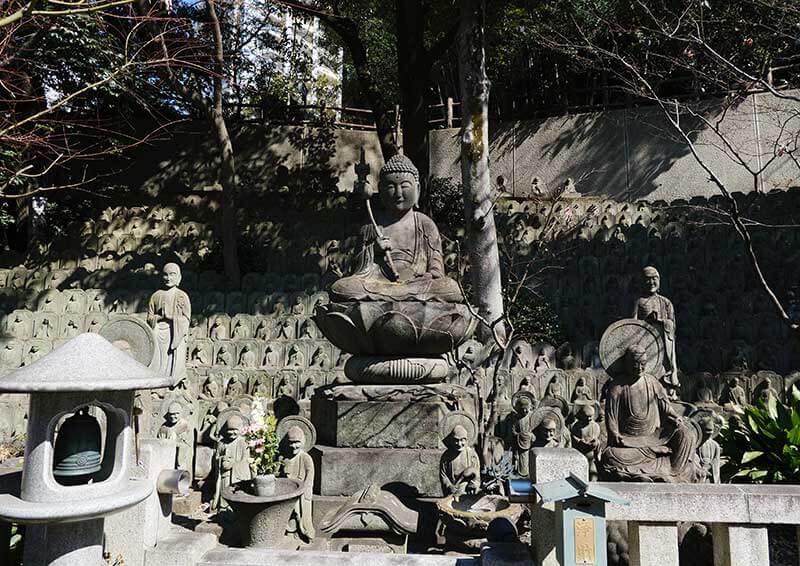
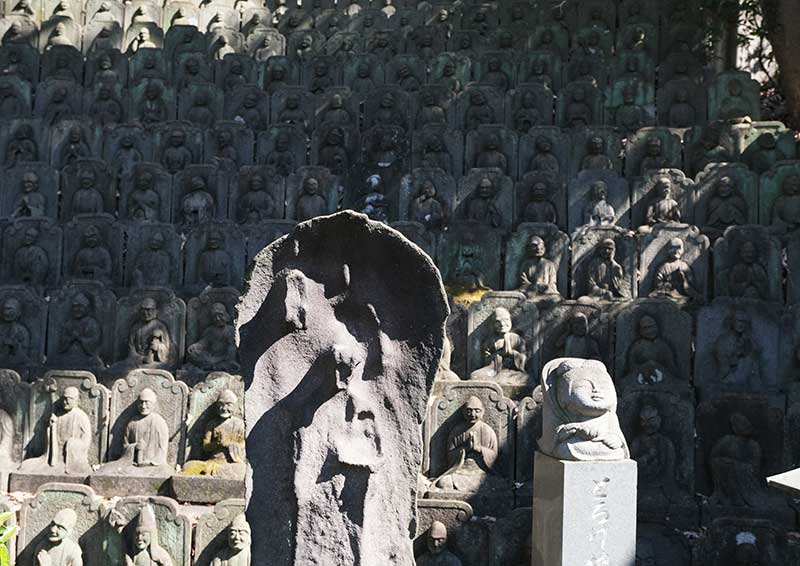
When you go down Gyoninzaka, Hotel Gajoen Tokyo is on your left.

C.Meguro River Taiko Bridge
The bridge spans the Meguro River and is now flat, but in the Edo period it was named “Taiko-bashi” because it was shaped like the body of a drum. It was also depicted in Utagawa Hiroshige’s “Meguro Taiko Bridge, Sunset Oka,” one of the 100 famous views of Edo. The current bridge was completed in 1991.
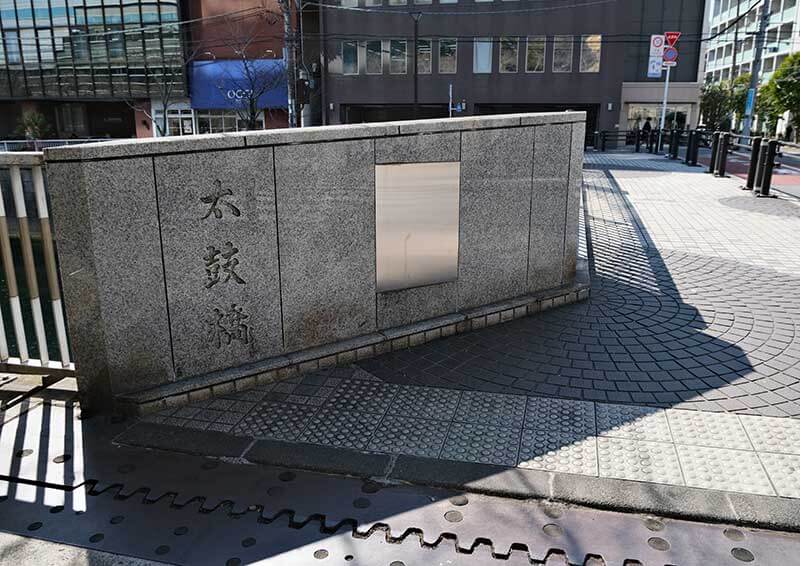
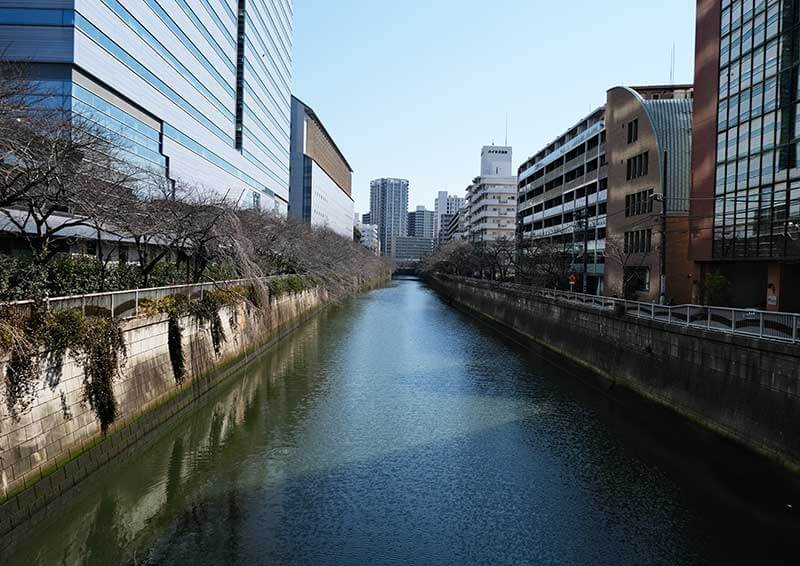
Go straight ahead and cross Yamate Street.
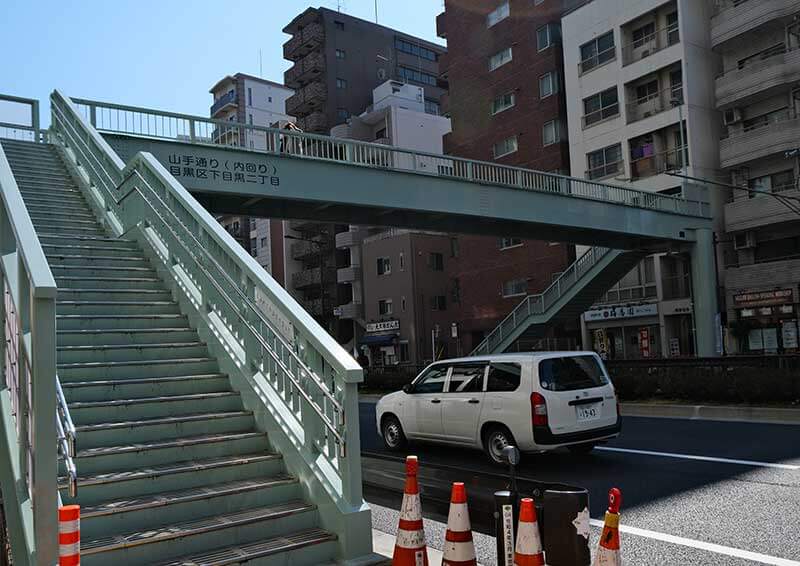
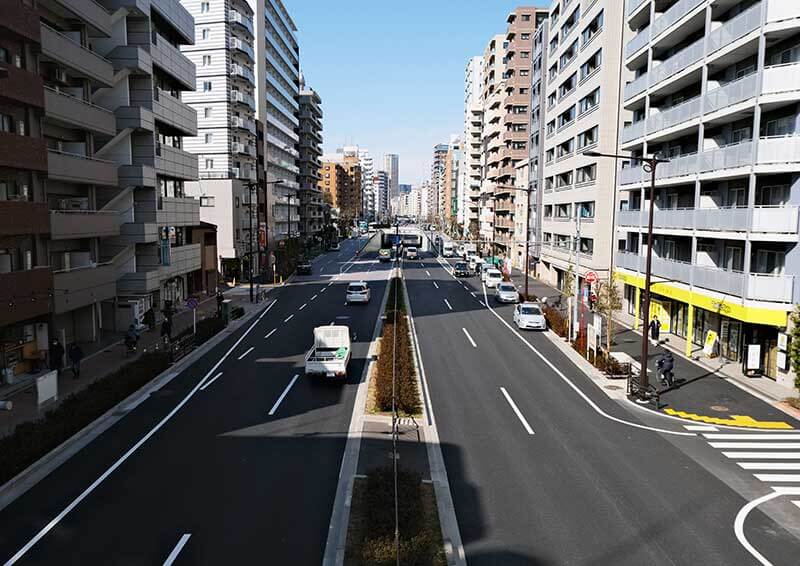
D.Banryuji Temple
Shomyoin was founded in 1648, and was renamed and reconstructed as Ryounzan Shomyoin Banryu-ji Temple in 1709 by Reiun Shonin of Zojoji Temple.
Benzaiten, one of the Seven Lucky Gods of Yamate, is enshrined in the grotto. In addition to the Benzaiten (Goddess of Mercy) in the grotto, there are other unusual Jizo statues such as Osiroi Jizo in the small, well-kept precincts.
There used to be a statue of Amida Buddha called “Meguro Daibutsu” (Great Buddha of Meguro), but due to the Shinto-Buddhist separation order of the Meiji era (1868-1912), the statue was exported to France in 1871, and is now in the collection of the Cerneschi Museum in Paris.
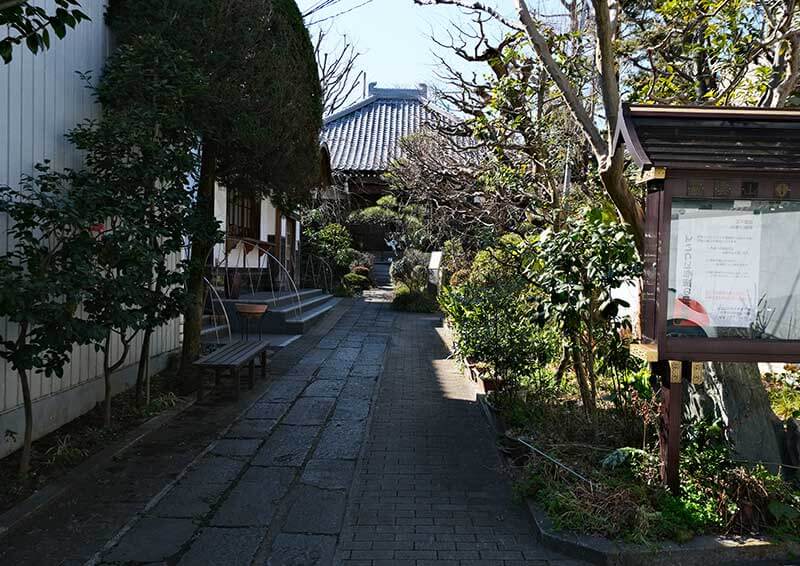

We will take a stroll along back roads so narrow that people cannot pass each other and steep stairs with a sense of exploration.
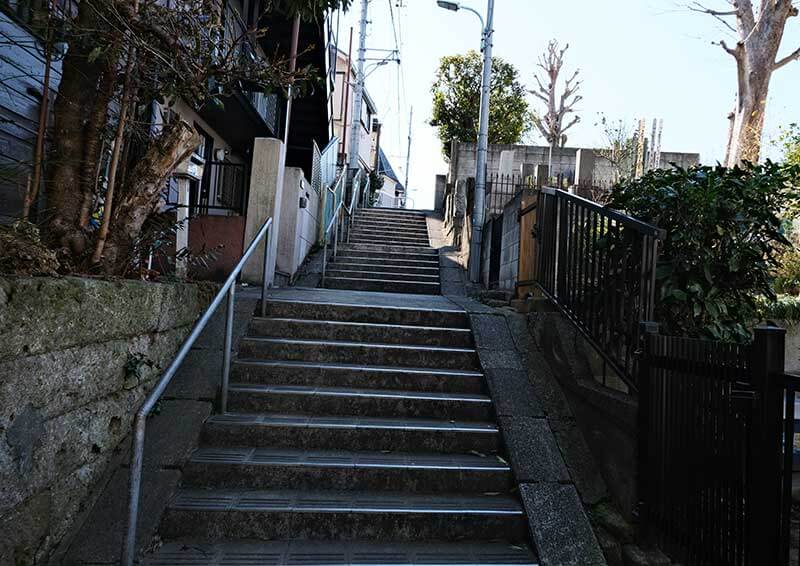
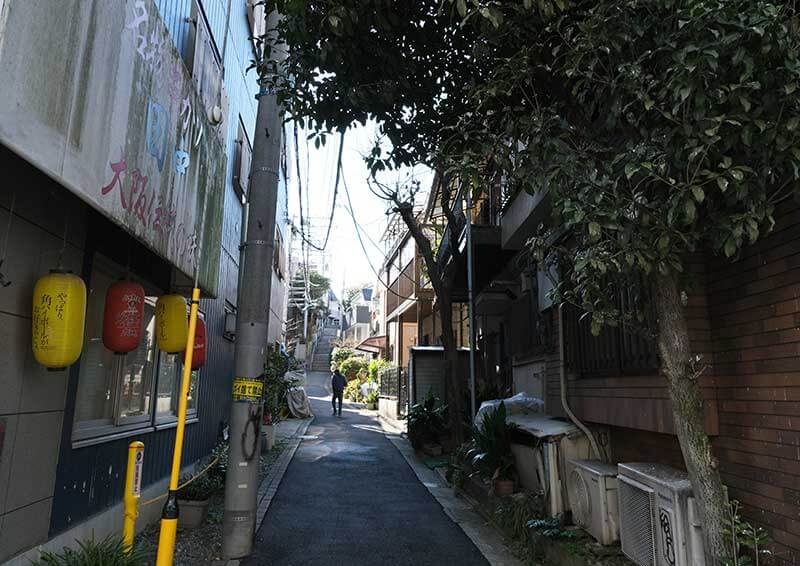
E.Five Hundred Arhats Temple
It was built in 1695 (Genroku 8) and moved to its current location in 1908 (Meiji 41). The 305 existing arhats were carved by Zenji Shoun Genkei during the Genroku era (1688-1704), using money collected from begging for alms in Edo (present-day Tokyo), over a period of more than ten years.
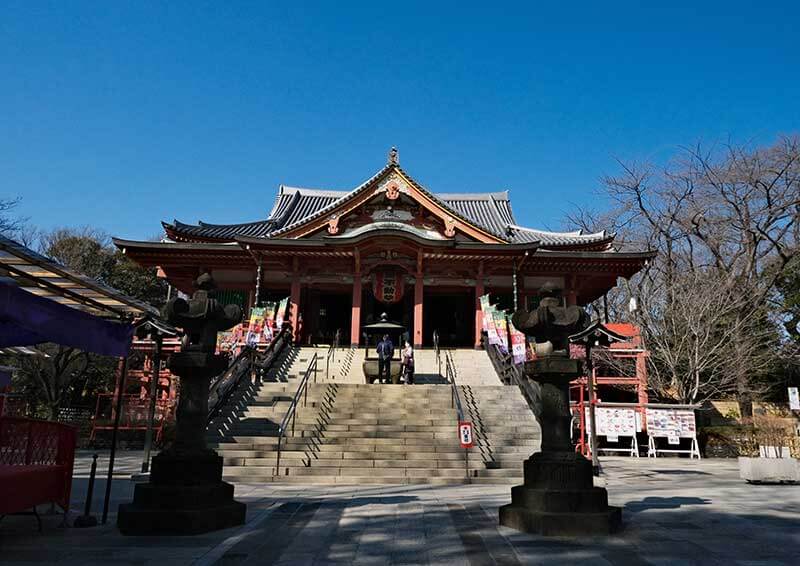
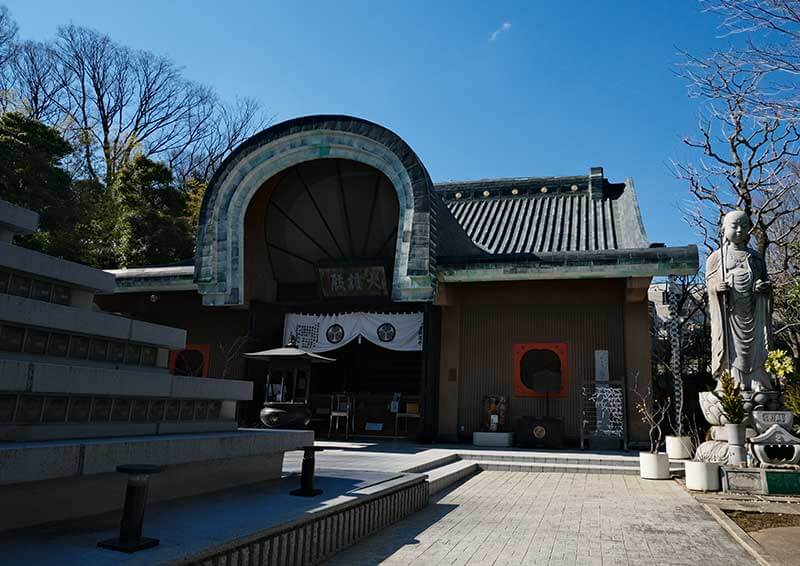
After paying the entrance fee, a statue of an arhat appears in the arhat hall. Unfortunately, photography is not allowed inside the arhat hall.
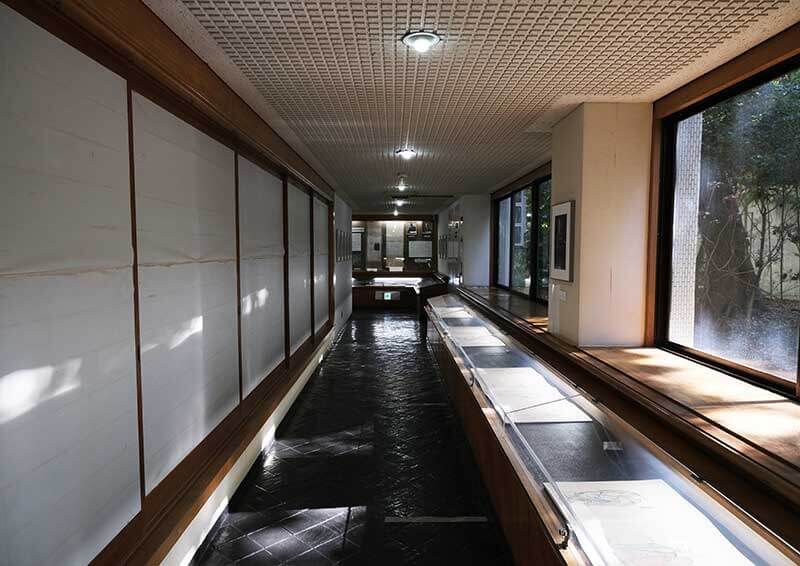
F.Meguro Fudoson Ryusenji Temple
Takienji Temple, founded in 808, is a temple of the Tendai sect of Buddhism.
In 1630, the temple became a branch temple of Gokokuin, a branch temple of Kan’eiji Temple, which was associated with the Tokugawa family, and developed under the patronage of the Tokugawa shogunate. It is one of the three major fudo in Edo and one of the five color fudo in Edo.


Under the protection of the shogunate, Meguro Fudo became one of the most popular places for pilgrims to visit in the suburbs of Edo, and the town in front of the gate was also bustling with activity.
Meguro Fudo prospered along with other scenic spots such as the sunset hill on Gyoninzaka and nearby temples, and was the site of a lottery known as the “Three Fortunes of Edo.
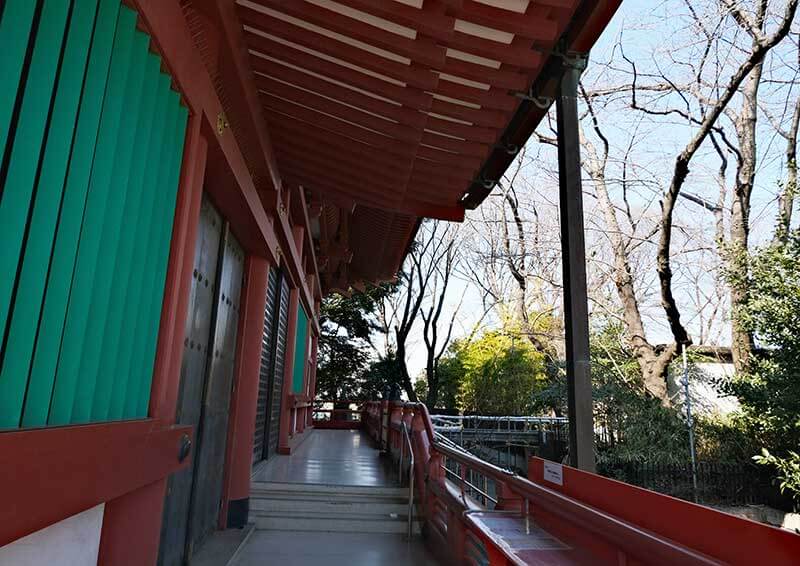
The shrine was well protected by the shogunate and became one of the most popular places for pilgrimages in the suburbs of Edo, and the town in front of the gate was bustling with people.
Together with scenic spots such as Sunset Hill on Gyoninzaka and nearby temples, Meguro Fudo prospered as a result of a wealth lottery known as the “San-Tomi of Edo.
G.Jyoyuin Temple (Takoyakushi)
Although it is a small temple, it is revered as the “Buddha of Disease Control” because “anything can be cured if you believe in it and pray for it.
The unusual catchphrase, “Thank you, Octopus Yakushi, for bringing good fortune,” is displayed along with a picture of an octopus. The stone is said to be beneficial for “warts, octopus, fish eyes, atopic dermatitis, skin diseases, eye diseases, prolapse of the intestines, chronic diseases, neuralgia, diseases of the internal organs, and other ailments. It comes with detailed instructions on how to stroke it. It is said to be a stone with a miraculous power that Sadanobu Matsudaira was so impressed by its high power that he wrote a book about it.
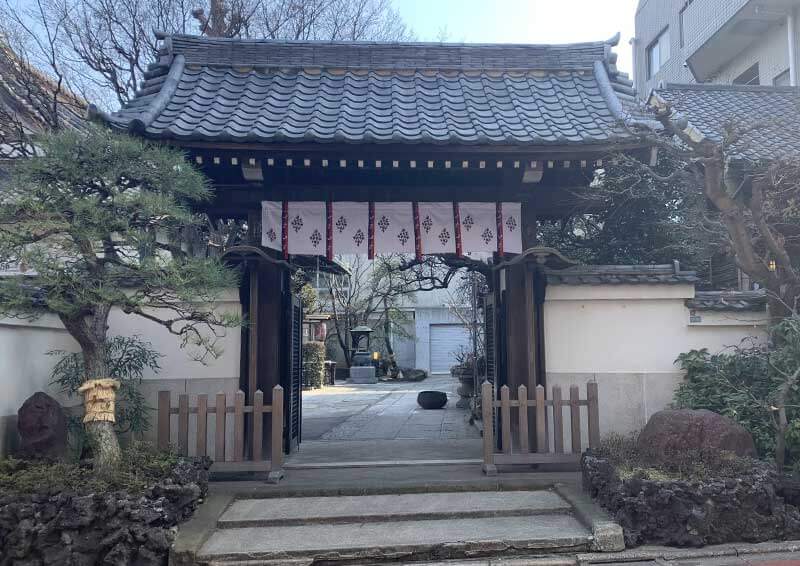
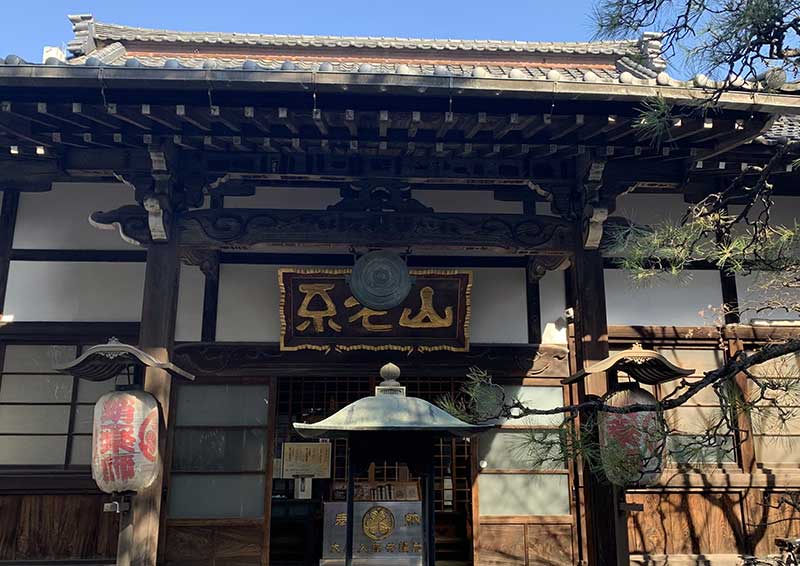
H.Rinshi-no-mori Park
This metropolitan park opened in 1989 on the site of the former Forestry Experiment Station, a research institute for forestry and forestry. The park is 700 m long from east to west and 250 m long from north to south, straddling Shinagawa and Meguro wards, and it takes about 45 minutes to walk around the perimeter of the park.
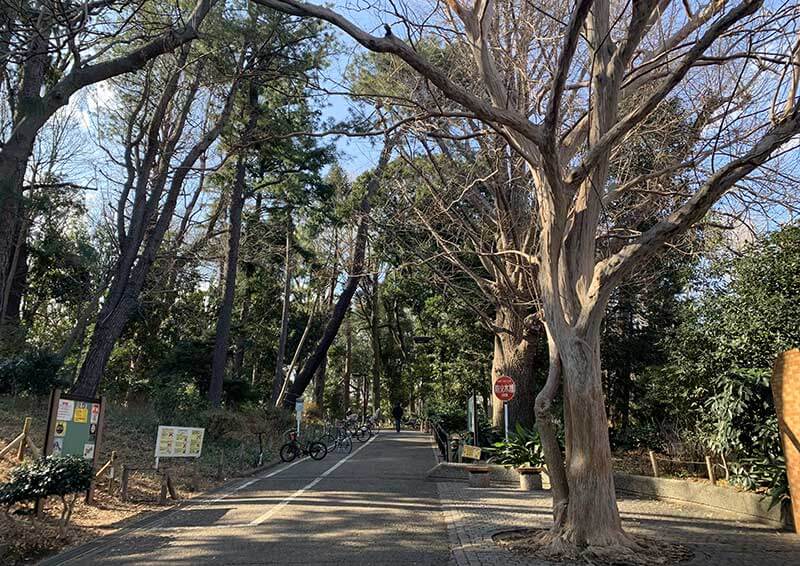
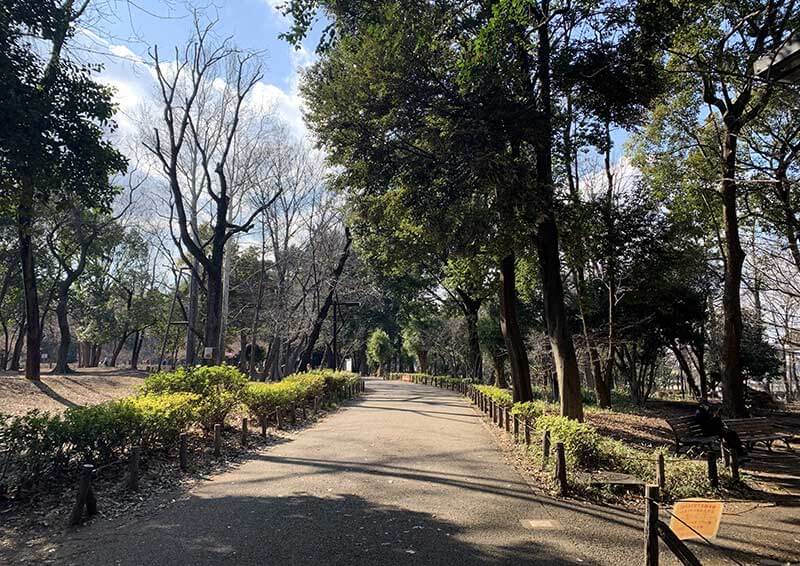
Some rare trees from the era of the forestry experiment station are said to have been preserved as they are. We will take a leisurely stroll in a forest bathing mood.
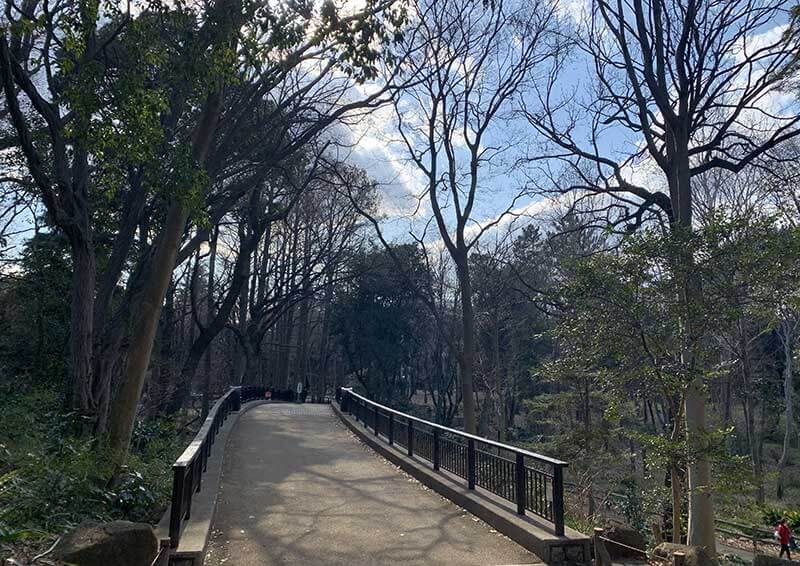
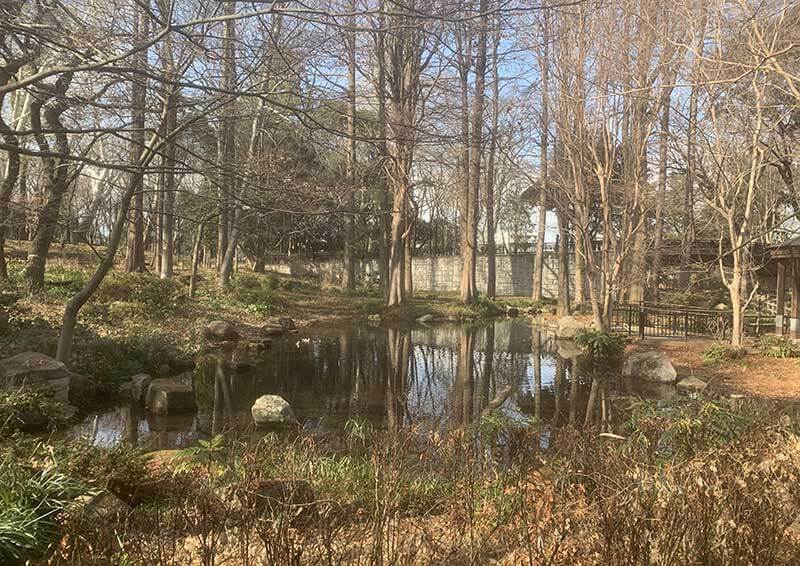
I.(Goal)Musashi Koyama Station
After exiting the south gate of Rintsunomori Park and crossing Kamurozaka Street, you will arrive at Musashi Koyama Station, where the goal is just past Tokyo Metropolitan Oyamadai High School, and today’s walk comes to an end.
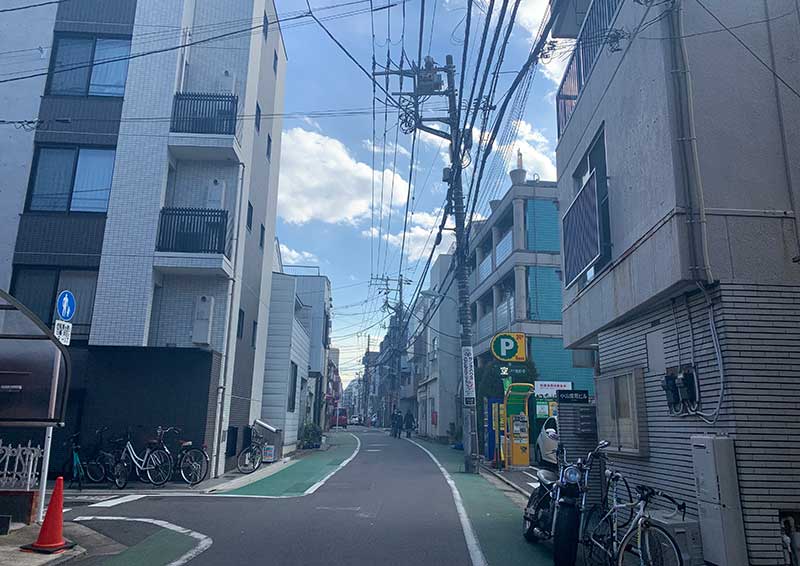
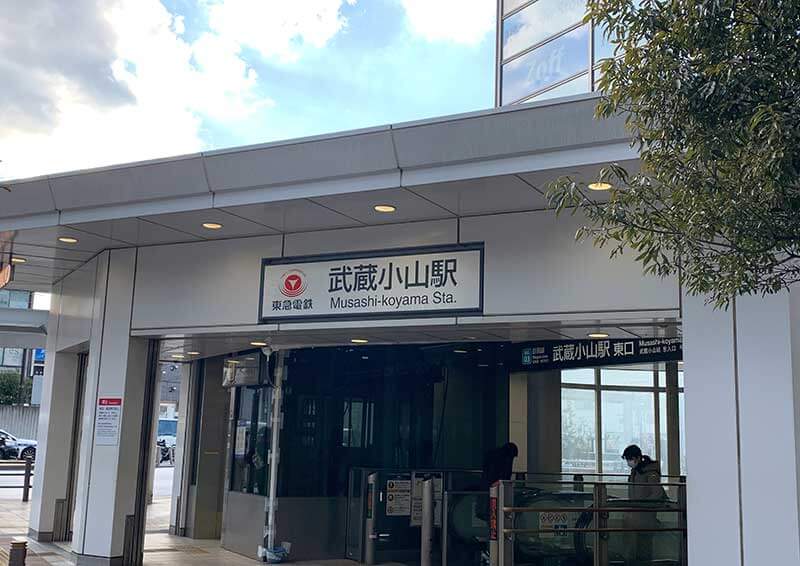
Route Review of Meguro
A.(Start)JR Meguro Station
↓ 300m
B.Daienji Temple
↓ 400m
C.The Meguro River Taiko Bridge
↓ 550m
D.Banryu-ji Temple
↓ 500m
E.Temple of the Five Hundred Arhats
↓ 230m
F.Meguro Fudoson Ryusenji Temple
↓ 250m
G.Jyozyuin Temple (Takoyakushi)
↓ 450m
H.Rinshi-no-mori Park
↓ 500m
I.(Goal)Meguro Line Musashi Koyama Station
Total3.2km(Does not include transportation within the facility)
Access to Meguro Station
JR Meguro Station : 2-chome Kamiosaki, Shinagawa-ku, Tokyo
Parking around Meguro
Stroll in Meguro Official Website
Daienji Temple : here
Temple of the Five Hundred Arhats : here
Meguro Fudoson Ryusenji Temple : here
Jyozyuin Temple (Takoyakushi) : here